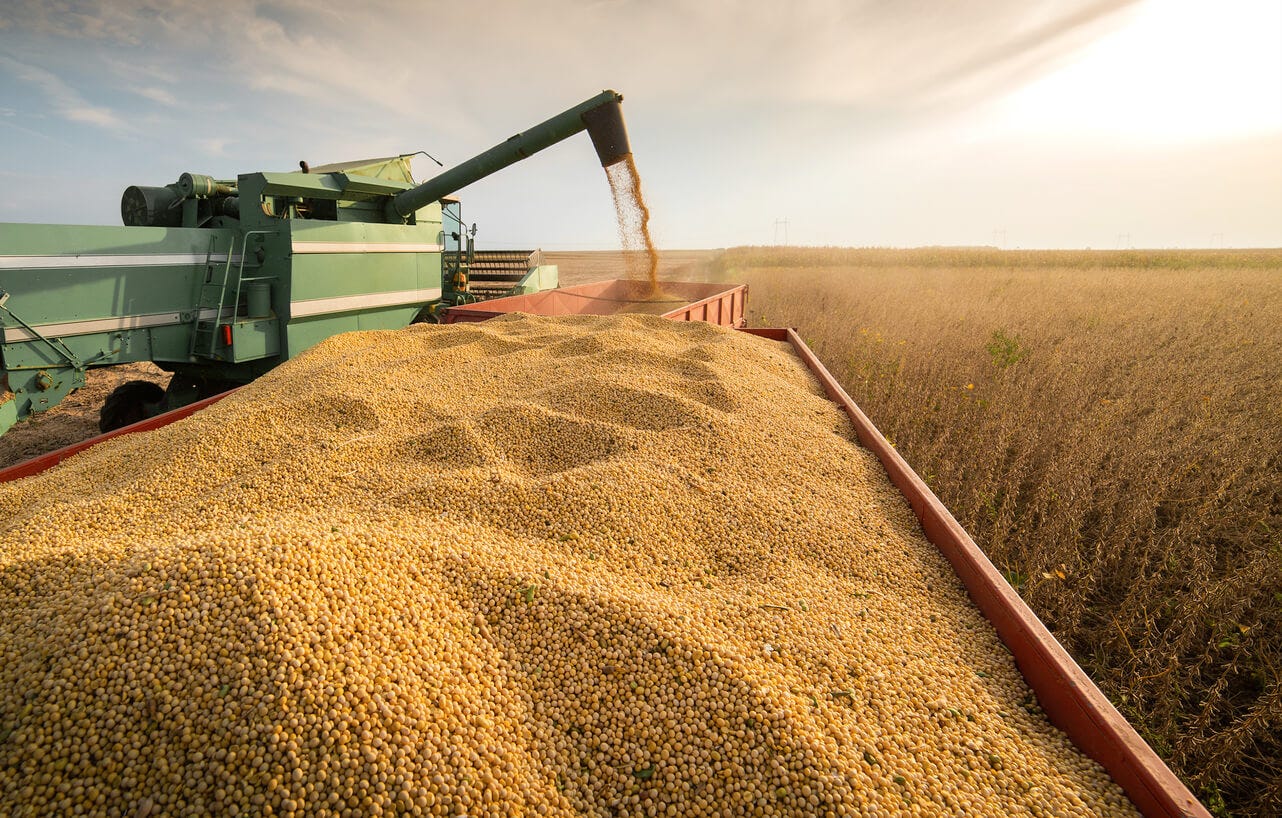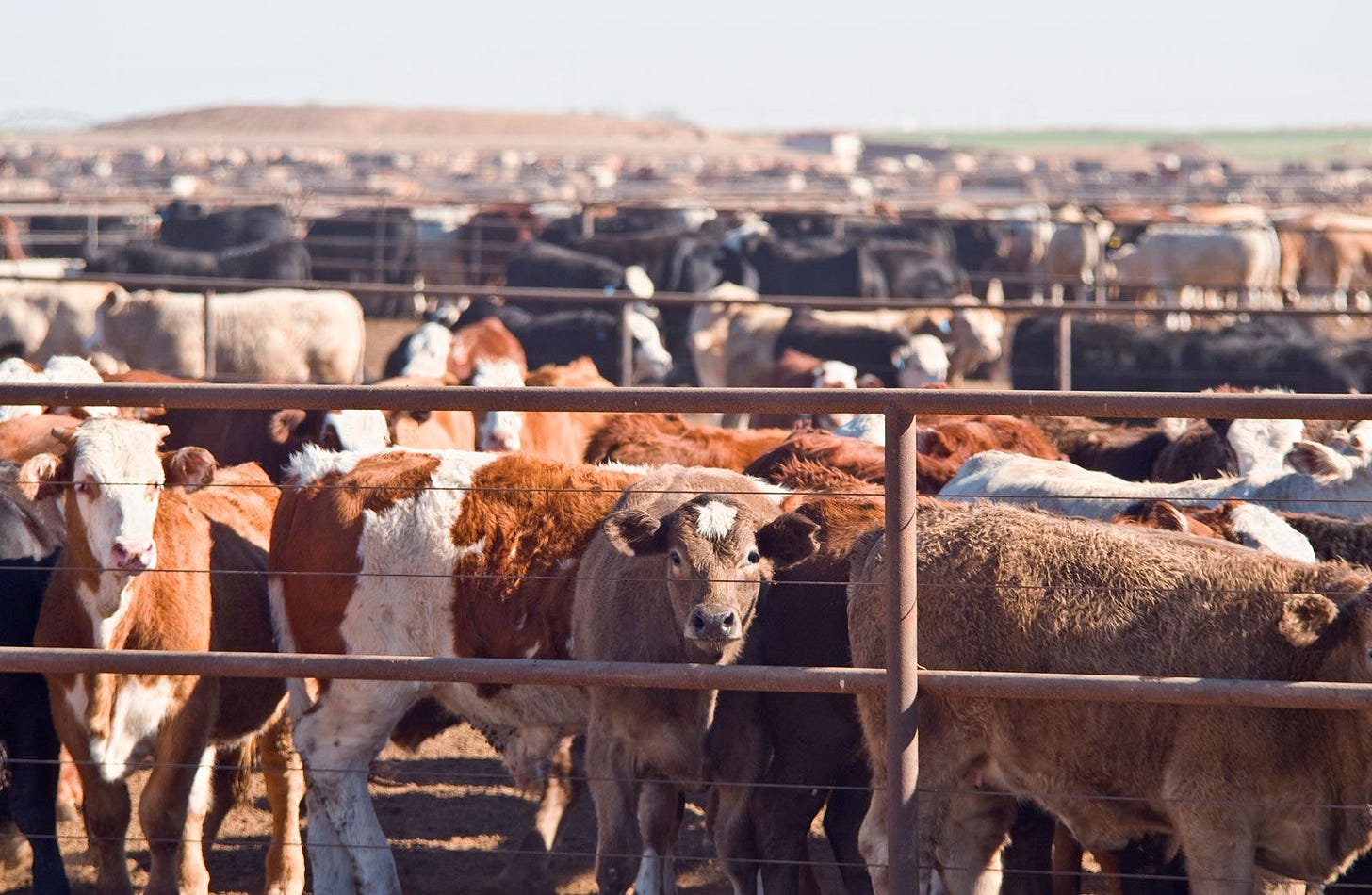America has always been about the land. Before white people of the “West” came here, there were probably 100 million native Americans or more, hundreds, perhaps thousands of tribes. No one owned the land, there were territories, there was fighting for territory, but the people mostly lived in peace with the land.
Europeans had lived in peace with the land in Europe for most of the history of Europe, until the industrial revolution and the fencing of the land, the Great Enclosure. Prior to this, feudal arrangements allowed for a common ownership of land, the peasantry could till the soil, graze it and hunt the land at will, a percentage of every harvest given to the feudal lord. Starting in the twelfth century, proceeding through the fifteenth to seventeenth centuries, and finalized during the industrial revolution, manorial lords effectively took the land for themselves and increasingly impoverished the peasantry, forcing them into cities. Greater Europe did not follow England in this regard until the industrial revolution. Europeans conditioned to fence-rows brought the concept here, and that remains core to what remains of the American dream, a piece of land of one’s own.

Europeans also brought with them their ideas of agriculture. Some of the natives of America had learned how to till the soil, but mostly they learned how to manage the land for food production without farming as we understand it. As example, they learned that if you periodically burn the land, the land would be more productive. In Northern Minnesota, they burned the forest because the blueberries would be most productive for years after. All across America, natives learned how to make the land most productive, year after year, making the land more conducive to producing the wild plants they gathered for sustenance.
Today, the land of America has never been less healthy; productive for commodity crops - feed animals, corn, soybeans, wheat, oil seeds, cotton, sugar beets, timber - only because of fossil fuel inputs, and productive for almost nothing else, no other species, not least of all healthy people - well, very productive for the investor class1. As a kid I saw thousands of monarch butterflies every year. I despaired in recent years, seeing only one or two a day. I saw about ten this year through the summer, one of which was dead.2 I spend most of every day all summer, outdoors.
In 1800, probably 70% of 100 million Americans were living directly off the land, growing, gathering, hunting and fishing for 50% of the food they ate. In 2024, Probably less than 0.1% of 330 million Americans are growing, gathering, hunting and fishing more than 10% of the food they eat. In 1400, 100% of the 100million here were growing, gathering, hunting or fishing for 100% of the food they ate, without “farming” more than 1% of that overall. Now, Native American Indians are less than 3% of the population, and few of them are growing, gathering, hunting and fishing for more than 50% of the food they eat. The vast majority of Americans today have no real connection to their food.
About 65% of Americans are homewoners, probably 70% of those have some ground to plant veggies, probably 5% of those do. Also, “Homeownership” is really a stretch insofar as the the bank and the county you live in owns “your” land - see what happens if you stop paying your mortgage or your taxes.
In 1800, 70% of Americans were farming. Today that is less than 3%, and most of those farmers are less farmer than agribusinessmen, working thousands and sometimes tens or even hundreds of thousands of acres. The largest landowners of agricultural land are billionaires, hedge funds and private equity, and pension funds. Lately, Bill Gates has raised eyebrows, becoming the largest single (pardon the pun) owner of agricultural land in America, something like 340,000 acres. It is easier for a Chinese citizen of means to purchase agricultural land in America than it is for most Americans.
The majority of farmers are older than 60. There is about to be the largest land grab in the history of the world, some estimated 24 million acres, perhaps much more, transferring from individual farmer to private equity/institutional investor or the government.
I suspect we also face the specter of the Federal Government effectively seizing some of that land, to give to the migrants they have been letting in illegally by the tens of millions.
I suspect too, a lot of these billionaires and investment funds are scheming ways to take land out of production for the UN 2030 project, a globalist plan to take 30% of land in production out of production, making it wild again, forgetting, ahem, that this would cause depopulation, people starving.
All this big money foreign and domestic of course puts land prices out of reach for a lot of people who would like to return to the land to farm. You can’t start a small local farm with several hundred thousand dollars of debt.
Having spent several years pouring over real estate listings in search of my own forever farm, I have become painfully aware of the cost of farmland. Farmland prices are rising and good land for farming is becoming increasingly scarce. This has serious implications for the future of the nation’s farm economy and farm system, but also for America’s agricultural landscape. As the older generation of farmers begins to wane, what will happen to their farmland? How will new farmers access land to grow the food that feeds our country? And, how can we preserve farmland for future generations?
This is a fine article from
, about the issues of modern farming, farm ownership, the need for a vibrant local farm system, and the means to make that happen.Like Ms Burns,
has made it her life mission, to help young Americans to return to the land to become farmers.The average American farmer is over the age of 60 currently.
They are going to age out of the farming industry soon (thousands are right now). They are tired of working 18+ hour days and managing hundreds of acres of land.
They don’t want to sell their farms to corporations or developers. They love their land. Many try to pass the farms onto their kids. This isn’t always an option.
These farmers are actively looking for millennials and Gen Z individuals who are willing to work hard and do right by their land.
The farmers are willing to:
lease/rent acres so you can get experience
sell off parts of the farm to people who promise to do right by the land
engage in seller financing so you don’t need to call up the banks
take you on as an apprentice for a year before they retire
make anything work
Trust me… these people are exhausted. Make it easier for them to retire and preserve their farms. No one wants to watch a family farm turn into 50 unaffordable apartment units.
I am breaking all this down here and inside of my publication (House of Green)! We are entering into a land revolution. And I am here to document it!
When I was writing my business plan to turn Hiawatha Golf Course in Minneapolis into a Food Forest, Farm and Restaurant, I was working with an older fellow who was in turn working with local farmers, trying to find some alternative for their land, rather then selling it to some big agri-businessman, or some giant money fund or corporation. A lot of them, he told me, had some guilt about being “chemical farmers”, what had been done to the land in the process. They wanted some legacy other than ruined soil and destroyed bio-diversity, selling out to the highest bidder/absentee landlord.
Food Forest, Farm and Restaurant
In 2014, the Hiawatha golf course in Minneapolis Mn flooded extensively. The course is next to Lake Hiawatha, which is a pass-through for historic Minnehaha creek. The entire area was a wild rice wetland pre-colonization, with a smaller, very shallow lake called Rice lake. Rice lake was dredged from 1929-31, the fill used to build up the other half of t…
Of course flooding the country with migrants raises the cost of housing, and land, which benefits again the investor class and those already on land or in homes, but it also puts farming out of the reach of the millions who would like to farm locally if it were affordable.
It is no secret globalists of the West would, if they could, shuttle all of us into cities. Easier to track, manage and control us. A people, as we are seeing, mostly removed from the land, ignorant of the cycles of the season, are neither particularly healthy or happy. Utterly dependent on food and health care systems, that too is very lucrative for the elite.
If I were emperor, I would seize much of that land owned by billionaires and the investor class, and make it a kind of commons again, to rebuild a local, resilient food production and processing infrastructure. To keep the elite from huddling everybody in cities, rather initiate the opposite effect, empower the local, and make a people mostly ungovernable, something like Thomas Jefferson imagined.
Alas all I can do is warn my readers, they enclosed the land, they tried to push everybody into cities during the industrial revolution. Doing so has had dire consequences for people, the land and really all life. They mean to complete that process3. I expect them to fail, but they can do a lot more damage if we let this taking continue.
It is irreligious to point it out, but those depending on their retirement on investment funds are passively investing in big ag, big food production, “health care” and the war machine, retiring off the back of a deeply unhealthy people, nation and empire - which the collapse of would surely interrupt their retirement plans.
I saw about ten monarch butterfly through the summer until August. Then in September I saw monarch every day regularly. My instinct about this is, the monarch rarely breed in the “breadbasket” anymore, industrial agriculture has wiped out their habitat/food supply, and it is a gauntlet of poisons. They breed more in the north woods, the coniferous forest, where there is more habitat at woodland edges and not such a proliferation of pesticides. By September in central Minnesota, pesticide use is way down, and the asters and goldenrod are blooming in abundance - though I saw a lot fewer of those flowers this year.
Really, I think globalists want to make all the world a favela, and kill most of us off in the process, an orderly depopulation - to save the planet of course, for themselves.









They like the fields as flat, featureless and sterile as the spreadsheets they live their lives by.
There will be a tiny percentage of folks who care about these issues and take action to change to a more rural, close-to-the-land lifestyle. However, from what I see just in my small-ish town, most people are completely wrapped up in their post-modern lives of carting their children around to organized sports 5-6 days a week (I only get them for 30 minutes once per week), and constantly being entertained, whether through their food, tv, live concerts, or "vacations." I have grave concerns about how these people will behave if there is any kind of full-blown crisis, whether it is real or it is machinated by the psychopathic tyrants.